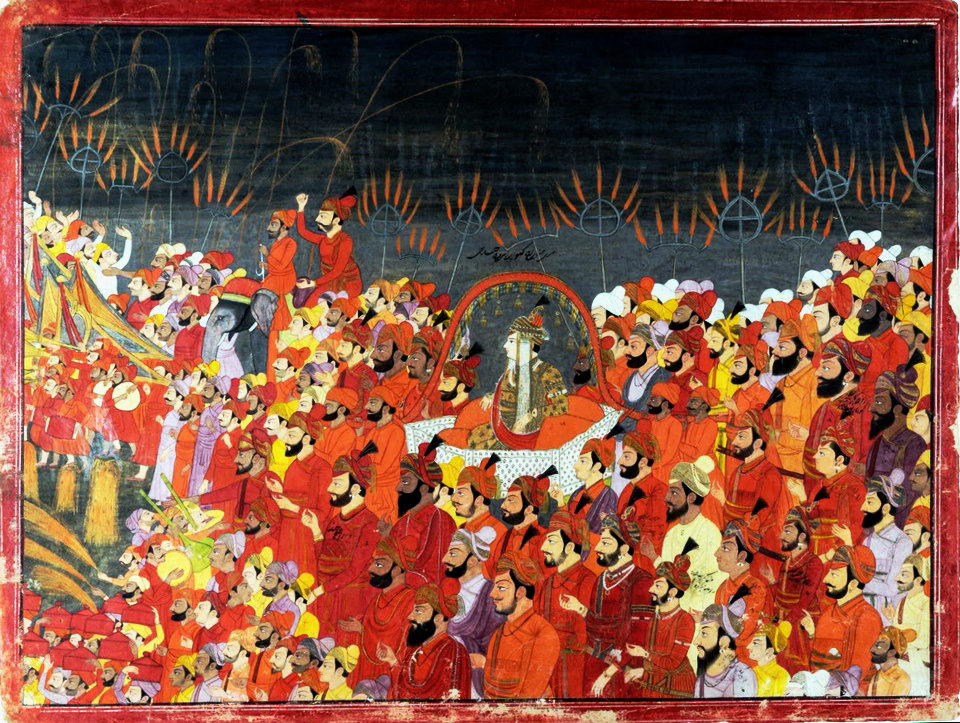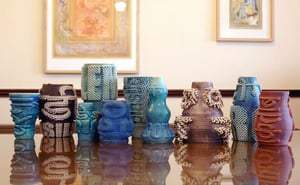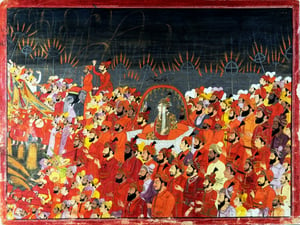The art section displays the collections of Sir Purushottam Mavji, acquired in 1915, and the art collections of Sir Ratan Tata and Sir Dorab Tata, donated in 1921 and 1933 respectively.
In this section, the most famous paintings, sketches of ‘ Rajaravivarma ‘, and ‘Sir. Ratan Tata ‘, has a collection of European artworks. These are the rhythmic bundles of ‘Mural’ films, which are the most prestigious ‘Ratan’ artists. Contents. They are, ‘jam shet g. Nuzir von Tata ‘, his second son. The objects of Ratan Tata are very much in display. She wrapped around the world and chose for a museum in Mumbai, bought, bought, and presented as a number of specials gift.
The museum’s miniature collection encompasses representations of the main schools of Indian painting namely, Mughal, Rajasthani, Pahari and Deccani. It features palm leaf manuscripts dating to the 11th-12th centuries to the early 19th century pahari paintings, as well as paintings from the Sultanate period. Notable manuscripts housed in the museum include the Anwar-Suhayli painted in Mughal emperor Akbar’s studio and a 17th-century manuscript of the Hindu epic Ramayana from Mewar.
An exhibition entitled Pravaha highlighting early phase of Sir J.J. School of Art and the Progressive Art Movement was launched on 24 July 2017. The exhibition covered a range of paintings from the 1880s to 1950s through works of Pestonjee Bomanjee, Rustom Siodia, Salvalaram Haldankar, Antonio Trindade, S. N. Gorakshakar, Govind Mahadev Solegaonkar, G. H. Nagarkar, J. M. Ahivasi, Raghunath Dhondopant Dhopeshwarkar, Raghuveer Govind Chimulkar, Rasiklal Parikh and Y. K. Shukla, Abala Rahiman, Keshav Bhavanrao Chudekar, Lakshman Narayan Taskar, Syed Haider Raza, and Krishnaji Howlaji Aara.
Matrika Design Collaborative is currently designing the museum’s Indian miniature painting gallery. The content developed for the gallery will be converted into Braille text and tactile labels for the blind with help from designers, fabricators and consultants from the Helen Keller Institute.
Chhatrapati Shivaji Maharaj Vastu Sangrahalaya
The Chhatrapati Shivaji Maharaj Vastu Sangrahalaya (translation: ‘king Shivaji museum’), abbreviated CSMVS and formerly named the Prince of Wales Museum of Western India, is the main museum in Mumbai, Maharashtra. It was founded in the early years of the 20th century by prominent citizens of Mumbai, with the help of the government, to commemorate the visit of Edward VIII, who was Prince of Wales at the time. It is located in the heart of South Mumbai near the Gateway of India. The museum was renamed in the 1990s or early 2000s after Shivaji, the founder of Maratha Empire.
The building is built in the Indo-Saracenic style of architecture, incorporating elements of other styles of architecture like the Mughal, Maratha and Jain. The museum building is surrounded by a garden of palm trees and formal flower beds.
The museum houses approximately 50,000 exhibits of ancient Indian history as well as objects from foreign lands, categorized primarily into three sections: Art, Archaeology and Natural History. The museum houses Indus Valley Civilization artefacts, and other relics from ancient India from the time of the Guptas, Mauryas, Chalukyas and Rashtrakuta.






